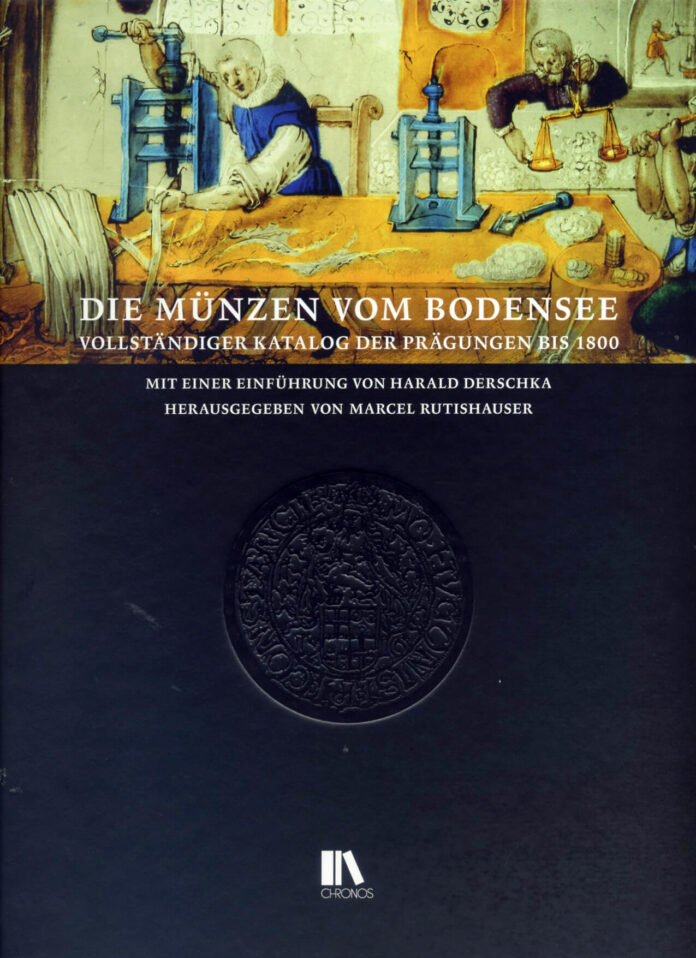
Lake Constance is one of the most beautiful areas of Germany. Not only locals are aware of this fact. Tourists from all over the world go there in order to visit the library of the Abbey of Saint Gall or the picturesque town of Stein am Rhein. All of them overlook the fact that this region has been an economic hotspot since the High Middle Ages and that it is entirely thanks to the high profits made by trade and industry that the marvellous region has significant historic monuments today.
The reason is that Lake Constance was an important traffic interchange. Until the 19th century, it was much easier to transport goods on rivers and lakes than on the miserable country roads that traversed Europe back then. And that isn’t everything: The textile industry, which was the most important branch of industry during the entire early modern period, was booming in this region. The reason was that the rural population – and more than 95% of all people lived in the countryside until late modern times – was able to produce most things by themselves. Except for outer garments. It was cheaper to purchase these goods, and therefore there was hardly a product that travelled further than bales of cloth. Those who produced goods of good quality and sold them at a reasonable price became rich. And at Lake Constance, it was possible to do so. In this region, a system was developed that enabled merchants from the cities to produce their goods at a low price in the countryside in order to circumvent the regulations of the guilds effective within the city walls.
In other words: The region of Lake Constance was one of the most important economic areas of the Holy Roman Empire and thus developed very early a highly sophisticated monetary system. Since Lake Constance is divided between three nations, it is rare to see all coins minted in this region in a single book. The new catalogue “Die Münzen vom Bodensee” offers the possibility to examine all coins of the entire economic area at once and thus to develop an understanding of the monetary significance of the region.
The collectors Hans and Marcel Rutishauser, whose collection is the basis of this splendid book, are the reason why the catalogue was created. They founded the Rutishauser Kunst- und Kulturfonds (Rutishauser Foundation for Art and Culture), under whose aegis their coin collection is kept, too, making it available for research and to the general public. They want to share their passion for numismatics with others and give them access to the wealth of information necessary in order to appreciate the coins and medals of the region of Lake Constance.
They were able to persuade one of the best renowned historian numismatists specialised in the region of Lake Constance to be the author for this project: Harald Derschka wrote the introduction, in which he looks back on 1000 years of monetary history of the region of Lake Constance. Katharina Körber is responsible for the catalogue. Heinz Reinhart took charge of the overall coordination.
This book succeeded perfectly in combining the features of a work for collectors with those of a field guide and is to become the standard reference for coins from Lake Constance. If you are interested in history, you can look forward to extensive and exciting introductions of the single towns and to historical commentaries on interesting pieces. If you have to produce a catalogue rapidly, you will be delighted about the clear structure, detailed descriptions and extensive references dispensing with the need for any other book. Moreover, collectors will appreciate the price indications for “very fine” and “extremely fine” specimens. Excellent photos and, whenever these do not depict enough details, outstanding drawings illustrate the type catalogue, which completely catalogues the following mints:
Appenzell Innerrhoden / Buchhorn (Friedrichshafen) / Diessenhofen / Feldkirch / Fischingen / Constance / Lindau / Markdorf / Montfort / Pfullendorf / Ravensburg / Radolfzell / Reichenau / Schaffhausen / Stein am Rhein / St. Gallen / Toggenburg / Überlingen / Wangen / Wasserburg / Weingarten
Let’s pay a big compliment to the publishing house, the Chronos Verlag in Zurich: The book’s layout and appearance are well conceived and beautifully executed, thus the work’s price of 98 euros is more than appropriate.
In other words, “Die Münzen vom Bodensee” is a book that will beautify any library.
The book is available in all bookstores.



